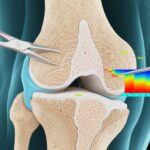Highlight
– In a target trial emulation of U.S. Medicare beneficiaries, GLP-1 receptor agonists (GLP-1RAs) did not show a statistically significant reduction in incident dementia compared to DPP-4 inhibitors (DPP4is) overall.
– Age-stratified analysis suggested possible benefit for those under 75 years (risk ratio 0.64; 95% CI, 0.46–0.93) but no benefit—and perhaps harm—in those 75 or older (risk ratio 1.22; 95% CI, 0.74–1.66).
– The study underscores the need for randomized controlled trials to clarify the cognitive effects of GLP-1RAs in diabetes care.
Background
Type 2 diabetes mellitus (T2DM) is a major risk factor for cognitive decline and dementia, with older adults facing a particularly heightened risk. Glucagon-like peptide-1 receptor agonists (GLP-1RAs) have emerged as second-line therapies, offering glycemic control, weight loss, and cardiovascular protection. Recent observational reports have raised hopes that GLP-1RAs might also reduce dementia risk, potentially transforming the pharmacologic landscape for elderly patients. However, these prior studies have faced methodological criticisms, including confounding and outcome misclassification, leaving their findings open to question.
Study Overview and Methodological Design
This study by Inoue et al. (Ann Intern Med. 2025) used a target trial emulation—a sophisticated observational strategy designed to approximate the rigor and design of a randomized controlled trial—to compare GLP-1RAs with DPP-4 inhibitors (DPP4is) as second-line agents for T2DM in older adults. The cohort included Medicare fee-for-service beneficiaries aged 66 years or older who were on metformin and had no diagnosis of dementia at baseline. Eligible patients initiated either a GLP-1RA or DPP4i between January 2017 and December 2018.
Patients were matched in a 1:2 ratio (GLP-1RA:DPP4i) using propensity scores to balance measured confounders. The primary endpoint was the onset of dementia, defined as occurring one year before the recorded diagnosis date, to mitigate diagnostic lag. Risk was assessed over 30 months.
Key Findings
The study analyzed 2,418 GLP-1RA initiators and 4,836 matched DPP4i users, with a mean age of 71 years and a female predominance (55%). Over a median 1.9-year follow-up, dementia was diagnosed in 96 GLP-1RA users and 217 DPP4i users.
– The estimated 30-month risk difference was −0.93 percentage points (95% CI, −2.33 to 0.23), and the risk ratio was 0.83 (95% CI, 0.61 to 1.05), indicating no statistically significant difference overall.
– Age-stratified analyses revealed a lower risk of dementia for GLP-1RA users under 75 (risk ratio 0.64; 95% CI, 0.46–0.93), but no benefit in those 75 or older (risk ratio 1.22; 95% CI, 0.74–1.66).
– Sensitivity analyses yielded similar results, reinforcing the primary findings.
Mechanistic Insights and Pathophysiological Context
GLP-1RAs have been shown in preclinical studies to exert neuroprotective effects, including reducing neuroinflammation, enhancing synaptic plasticity, and mitigating amyloid-beta accumulation—mechanisms relevant to Alzheimer’s disease and other dementias. Their capacity to improve metabolic control and reduce vascular risk factors further supports biological plausibility. However, whether these effects translate into meaningful cognitive protection in older adults, especially those with longstanding vascular and metabolic disease, remains unproven.
Clinical Implications
For clinicians managing older patients with T2DM, these findings offer reassurance that GLP-1RAs do not increase dementia risk compared to DPP4is, but also temper expectations regarding a substantial preventive effect. The potential age-related benefit is intriguing but not definitive. Clinicians should continue to base GLP-1RA use on established indications—glycemic control, weight management, and cardiovascular protection—rather than on unproven cognitive benefit.
Limitations and Controversies
Key limitations include residual confounding due to lack of data on BMI, glycemic control, and diabetes duration—factors that may influence both drug choice and dementia risk. Outcome misclassification is possible given reliance on claims-based dementia diagnoses, although the authors attempted to mitigate diagnostic lag. The relatively short follow-up (median 1.9 years) may be insufficient to capture the full latency of dementia development. Finally, while target trial emulation improves causal inference, only randomized controlled trials can definitively ascertain the cognitive impact of GLP-1RAs.
Expert Commentary or Guideline Positioning
Current diabetes management guidelines do not recommend GLP-1RAs specifically for dementia prevention. Leading experts have called for prospective, biomarker-driven studies to clarify their neurocognitive effects. The present study supports a cautious approach, emphasizing established benefits while awaiting more robust evidence regarding dementia.
Conclusion
In summary, this large observational analysis found no clear evidence that GLP-1RAs reduce the incidence of dementia compared with DPP4is in older adults with T2DM, although a possible age-specific effect may exist. Well-powered randomized trials with long-term follow-up and comprehensive cognitive assessment are needed to resolve this important question.
References
1. Inoue K, Saliba D, Gotanda H, Moin T, Mangione CM, Klomhaus AM, Tsugawa Y. Glucagon-Like Peptide-1 Receptor Agonists and Incidence of Dementia Among Older Adults With Type 2 Diabetes: A Target Trial Emulation. Ann Intern Med. 2025 Jul 22. doi: 10.7326/ANNALS-24-02648.
2. Cukierman-Yaffe T, Gerstein HC, Williamson JD, et al. Relationship between baseline glycemic control and cognitive function in individuals with type 2 diabetes and other cardiovascular risk factors: The Action to Control Cardiovascular Risk in Diabetes–Memory in Diabetes (ACCORD-MIND) trial. Diabetes Care. 2009;32(2):221-226.
3. Holscher C. Insulin, incretins and other growth factors as potential novel treatments for Alzheimer’s and Parkinson’s diseases. Biochem Soc Trans. 2014;42(2):593-599.



